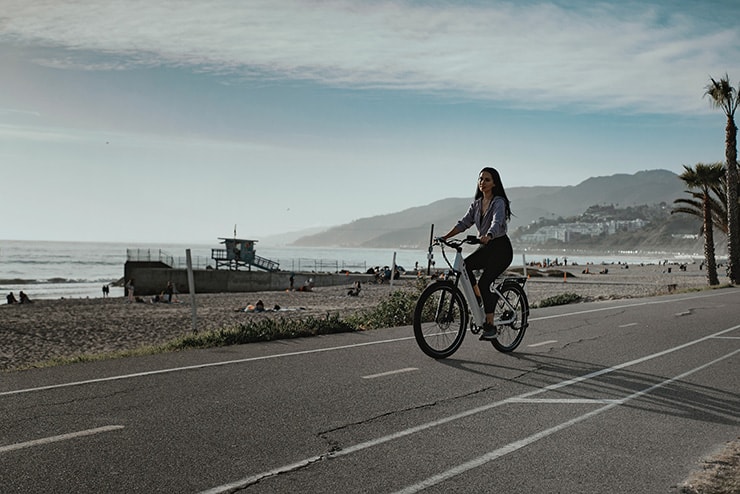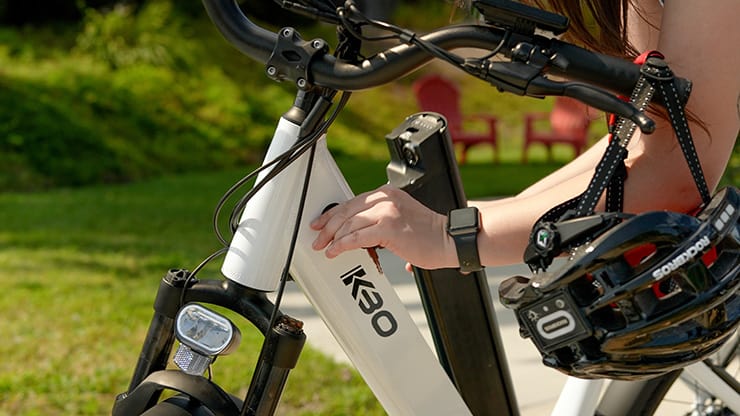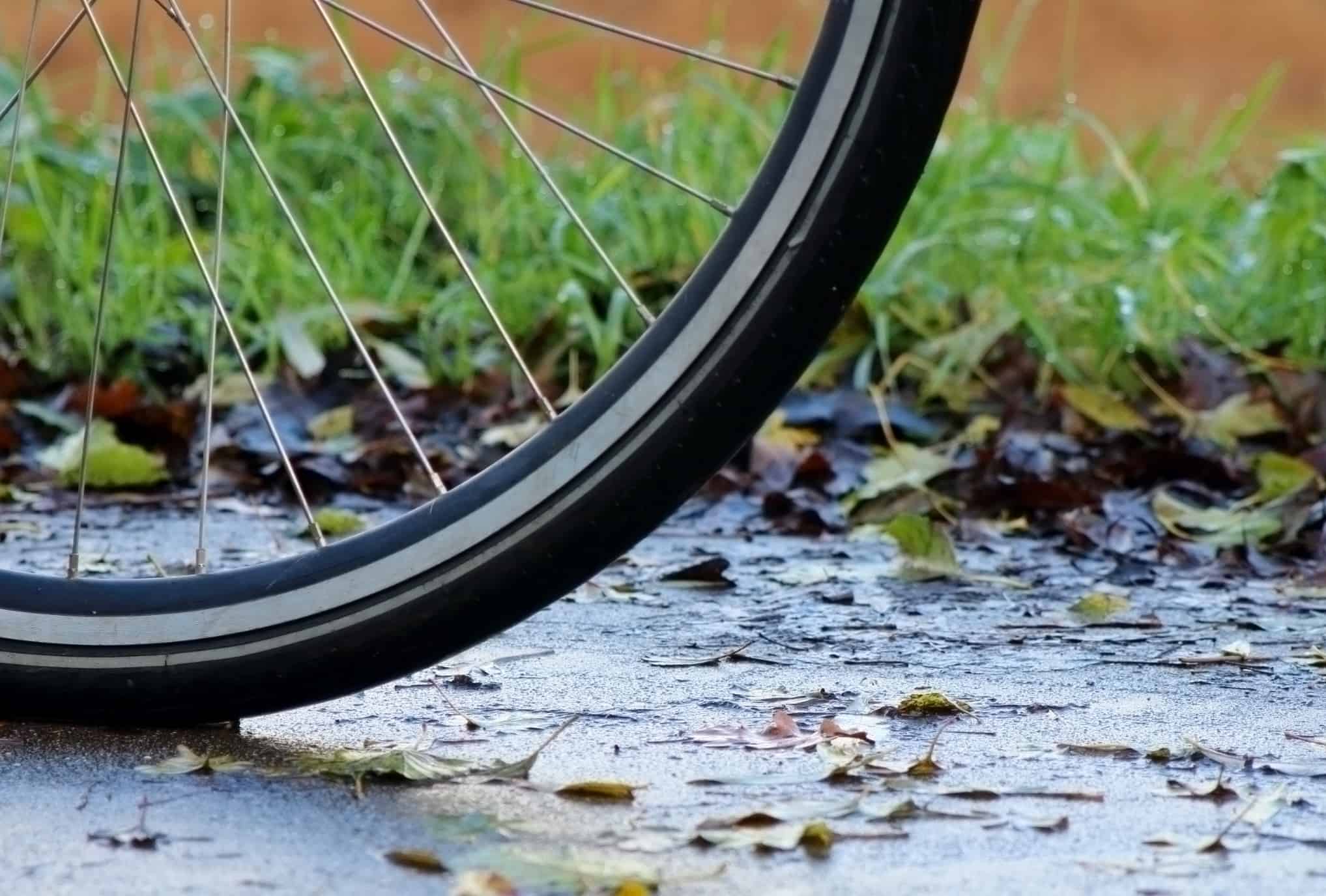Electric bicycles are becoming more popular and, in turn, more accessible. Unlike traditional bikes, e-bikes have electrical components and this makes you wonder about riding in wet weather. It’s common knowledge that electric devices and water aren’t good friends.
If you’re an avid cyclist, sooner or later you’ll find yourself dealing with the rain. It may be beautiful and sunny when you’re starting your ride only for things to become gloomy when it’s too late to turn back.
So, can you ride an ebike in the rain? Yes, you can. The electric components in an ebike are enclosed in a water-resistant compartment. In many cases, you’ll be able to enjoy a rainy ride without having to worry about damaging the bike. However, it’s not that simple.
Let’s get into the details.
Key Takeaways
- E-bikes are water-resistant but not waterproof. They can handle light rain but not submersion or heavy rain.
- There are materials and steps to waterproof an e-bike, such as using silicon, grease, tape, and spray.
- When riding in the rain you should wear proper gear, brake early, take corners slowly, and plan your route around an area with shelters.
- Also, carry a troubleshooting kit just incase water gets into the wrong place. You can make your own troubleshooting kit or buy one from a specialized e-bike store.
Is it Safe to Ride an eBike in the Rain?
Yes. Riding your ebike in the rain should not be a problem for the most part. Electric bike manufacturers know that they are meant to be used outdoors. So they make them with the ability to withstand exposure to the elements.
That said, it largely depends on how much it’s raining and the type of electric bicycle you have.
Just like your phone and watch, electric bicycles have an IP rating that shows the level of protection they have against water. The higher the rating, the safer it is to ride the bike in the rain. This is why it’s important to read the owner’s manual so you know where you can and can’t ride your ebike. Some bikes can only handle light rain.
Another thing, electric bikes are water-resistant, not waterproof. You shouldn’t submerge your ebike in water or ride it through a flooded area. If you do, water might get through to the bike’s electrical components and cause damage.
The good news is that there are things you can do to make it even safer to ride an ebike in the rain. These include waterproofing your bike and preparing yourself properly before each ride.
Speaking of waterproofing your electric bike…

Do I need to Waterproof my eBike?
If you live in an area that rains a lot, then waterproofing your electric bike may be the best thing to do. Not only do you have to deal with showers, but you’ll also find yourself cycling through puddles and muddy roads most times.
Waterproofing will offer some degree of protection for your bike and give you peace of mind.
Some of the most common materials for waterproofing a bike include silicon, grease, tape, and waterproofing spray.
Tips for Riding An eBike in the Rain
While waterproofing your electric bike will greatly decrease the chances of damage when you bike in the rain, there are a few tips you should keep in mind.
First of all, it’s important to remember all the safety rules that apply to all cyclists on rainy days, such as wearing proper, waterproof gear and bright, reflective colors. You should also ride cautiously during rain and bad weather, as the roads will be more slippery.
I will also review a few tips that apply specifically to e-bikes that will help increase your overall riding experience.
Bring a Troubleshooting Kit
Most electric bike riders should carry a troubleshooting kit every time they ride. Even if you go through the trouble of waterproofing your e-bike, things can still go wrong. Many electric bikes can be finicky; a little water in the wrong place may introduce problems that you’ll need to troubleshoot on the roadside.
You can make your own troubleshooting kit or buy one from a specialized e-bike store. (You’ll be able to find lots of options online.) If you want to make your own kit, there are a few essential items to include. Look at the list below for some ideas.
- Zip ties
- Wrench
- Tire levers
- Screwdrivers
- Flat-side cutters
- Brake pad adjustment tool
- Glueless patch kit
- Sensorless control
- Throttle
- Digital Multimeter
Remember that all electric bikes are different; when packing screwdrivers and wrenches, you’ll have to check what sizes you will need. Typically, you’ll be safe with 18mm, 8mm, and 10mm wrench sizes. You also may need a flathead screwdriver on top of a regular screwdriver.
Plan Your Route Beforehand

As you may have realized by now, waterproofing your electric bike may only partially protect it during severe weather, such as a torrential downpour. For this reason, you should plan your route before you go.
When planning your route, you should keep a few things in mind. First, always check the weather report to ensure no severe weather is coming in.
Second, try to mark down places where you can take shelter at. There may be a park with a gazebo you can hide under or a restaurant with a covered patio. Try to become familiar with areas that provide shelter, just in case the weather takes a turn for the worse. This way, you can wait it out and start riding when the weather calms down.
Brake Early & Take Corners Slowly
While this rule may apply to all cyclists, braking early and taking corners slowly while riding your e-bike in the rain is especially important. This is a good safety rule to follow, but riding carefully will help prevent damaging your bike.
For instance, if you ride recklessly and fall into a puddle, water could penetrate certain parts of your bike and cause damage. E-bikes also have a lot of expensive components on them, such as wires, cables, and the battery and motor. A hard fall may cause hardware damage, which may be costly to repair.
Clean Your eBike After a Wet Ride

After an e-bike ride that is particularly wet or dirty, it’s always a good idea to clean and dry your bike. As mentioned above, avoid hoses with high pressure when washing your bike. Using low-pressure water jets will help protect all the wires and other delicate components.
While a low-pressure hose will work well for cleaning, using a wet rag and soap is the best way to do it. While this may take some time, it will be the most thorough and gentle option. Using a wet rag will also avoid giving your bike water damage while cleaning. If you do use a hose, be careful of where you spray.
If your ride was full of mud and dirt, take your time cleaning and get every crevice to ensure all the dirt and grime are out.
As mentioned above, simply use a microfiber or regular cloth to dry your electric bike. If it’s a sunny day, you may also opt to air dry it.
Troubleshooting Tips for Riding an eBike in Wet Conditions
You can do everything you can to waterproof and protect your electric bike. However, there is no way to guarantee that things won’t go wrong while riding.
Maybe you encounter more rain and puddles than expected, or you take a fall. Whatever the case, you may need to know how to troubleshoot your e-bike on the go.
In this section, I will explain a few troubleshooting tips to help you prepare for the worst.
Always Have Access to Your E-bike Manual
The first and most important thing is to always have access to your e-bike manual. If the worst happens and your e-bike stops working, or there seems to be a problem, the manual may be a lifesaver. Manuals can do anything from explaining error codes to labeling your bike to help you know which part is which.
Furthermore, some manuals will have a phone number that you can call. If you’re in a bind, there may be a customer service line that can help you on the go.
If you have a dry bag, consider putting the manual in there. However, manuals are often thick and annoying to carry around. Consider downloading your e-bike manual on your phone if this is the case. Nowadays, you’ll probably be able to find a PDF of your e-bike manual simply by googling it.

Bring Spare Parts
As listed above in the troubleshooting kit section, you should bring a few things on each e-bike ride. In this section, I will explain more about the sensorless controller and throttle and why bringing these spare parts is a good idea.
Sensorless Controller
Having a spare sensorless controller is a good option for a few reasons. First, sensorless controllers are more affordable than regular stock unit controllers. Second, these types of controllers don’t need to plug into the hall wires. If there is an issue with the hall sensors on your e-bike, you’ll still be able to get home with a sensorless controller.
Keep in mind that if you need to swap out your old controller for a sensorless controller, there are a few different issues that could be happening. If you’re new to the world of electric bikes, you may need a professional to look at it to determine the problem.
There are three main issues that could be occurring, including a damaged hall sensor, controller, or wires. While damaged wires would be the most obvious and easy to spot, it can be tricky to determine whether the controller or hall sensor is the issue.
Throttle
When troubleshooting electric bikes, a common part to check is the throttle. It’s possible for moisture to seep into the connectors and cause issues. So if you’re riding in the rain and notice some issues, the problem may be due to water damage (or even hardware damage if you take a nasty fall).
Since throttles are cheap, it’s a good idea to always have a spare one with you. While filling space in your dry bag with a spare part may be a pain, it will most likely come in handy one day.
When shopping for a spare throttle, it’s best to buy one that comes from the same company or supplier as your e-bike. This will help guarantee that the connectors will be compatible with your bike.
While often the issue won’t be due to a faulty throttle, it’s the easiest thing to check and replace.
Know How to Test Your Hall Sensor
As mentioned above, it can be tricky to know whether your hall sensor is damaged or not. Knowing how to test your hall sensor will save you a lot of stress on the road and help you determine the right steps forward.
Testing the hall sensor is relatively easy; look below for a few easy steps.
- Plug the negative probe into the black wire. The motor will have five wires coming out of it. You’ll be plugging the negative probe into one of the wires coming out of the motor, which will be the black negative wire.
- Plug the positive probe into a signal wire. The next thing you’ll do is take the positive probe and plug it into a signal wire. There should be three signal wires to choose from.
- Spin the e-bike wheel. As the wheel is spinning, you should see the DMM read 4V. You need to plug the positive probe into each signal wire and ensure you get a reading of 4V. If this is the case, then your hall sensor is working.
Conclusion/Final Thoughts
Yes, you can ride an ebike in the rain. The electric components are usually sealed to protect them against water and dust, making most e-bikes water-resistant.
The bikes, however, are not waterproof. So you’ll want to avoid cycling in heavy rain and riding through flooded areas. Submerging an electric bike is not safe and it may cause serious damage.
If you often cycle in rainy weather you might want to consider waterproofing your bike. You can do this using a few accessible items and simple steps.
In addition to waterproofing your ebike, you should be a bit more careful when riding in wet conditions. Dress appropriately for the weather and bring a troubleshooting kit with you. Remember to cycle carefully and slow down when taking corners too.

